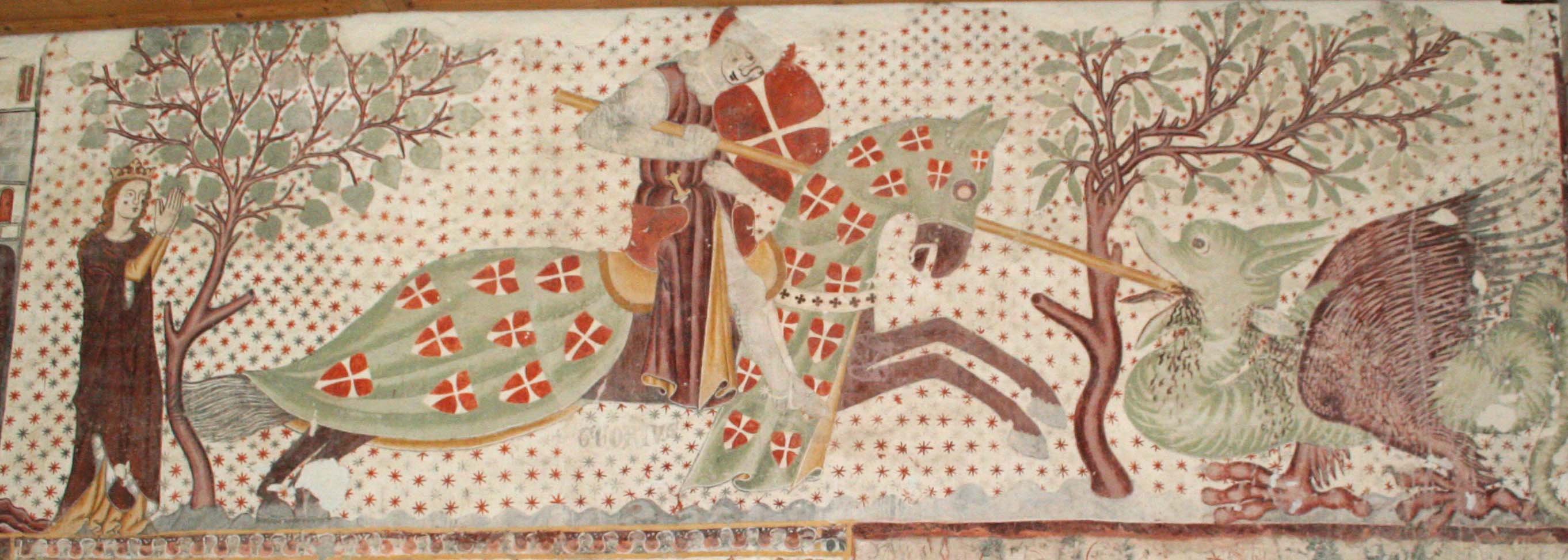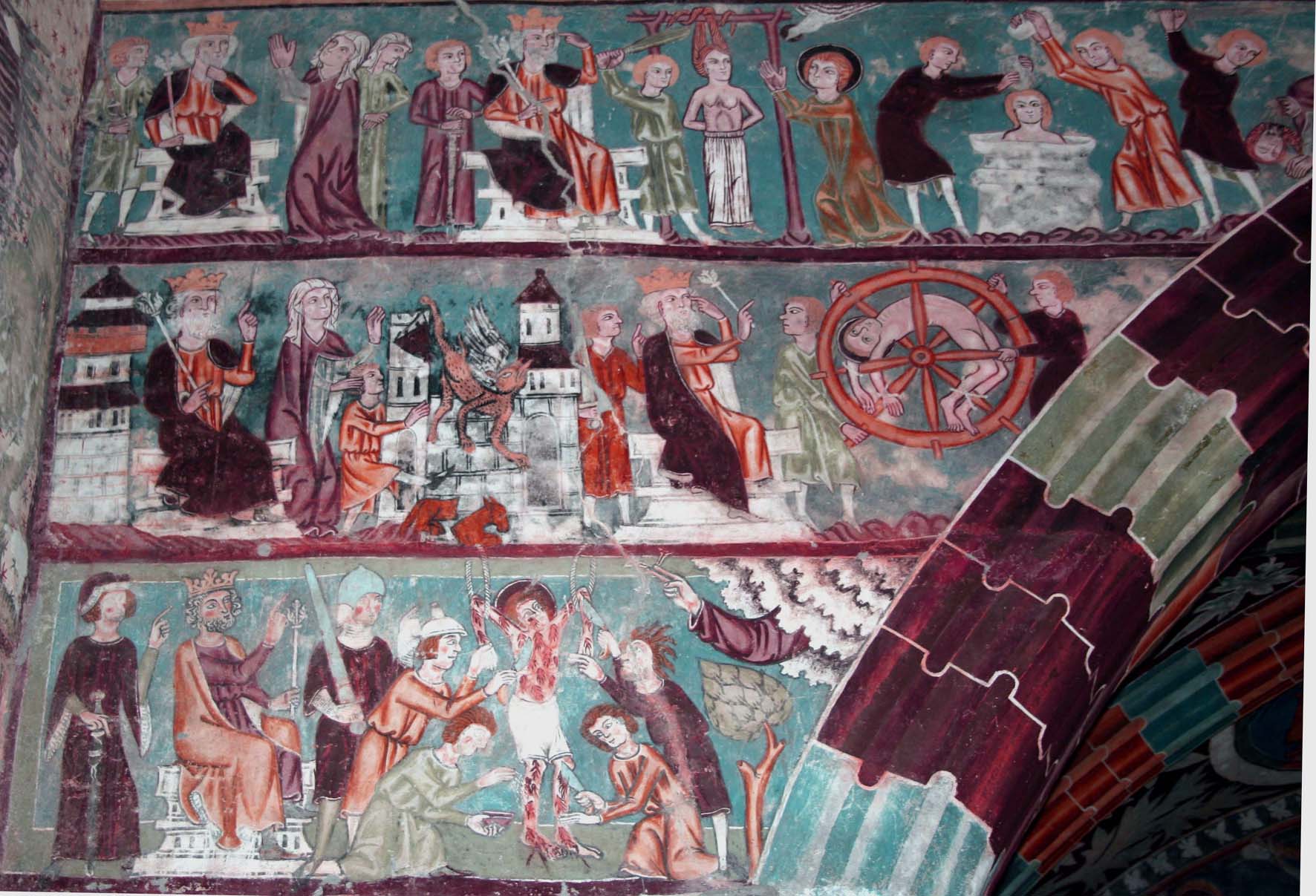Highlighted: Saint George
Frescos in the church Sogn Gieri of Rhäzuns (Graubünden)
Saint George was a highly popular saint in medieval Europe. We mostly encounter him as a knight on horseback slaying a dragon, as here in the Church Sogn Gieri in Rhäzuns (Graubünden).
This church conserves several frescos depicting the life and martyrdom of Saint George. They were made by the so-called Master of Waltensburg around 1350. The identification of the persons that appear in the frescos is not straightforward, because several versions of George's legend circulated. Here you find a shorter English version and here a longer Latin version with various additions. The popular Legenda aurea relates that Saint George lived in the times of Roman governor (praeses) Dacian, who served under Emperor Diocletian.
The frescos in Sogn Gieri depict an emperor or a king with a crown on his head and a scepter in his hand, who gives instructions to torture George. We also encounter a female figure: this is the king’s wife. We read that she was indignant at her husband’s behaviour and therefore threatened to convert to Christianity. The Legenda aurea relates that, as a punishment, Dacian had her hung by her hair. This scene is depicted in one of the paintings at the top. The second and third level of paintings show the martyrdom of George himself: we see him on an execution wheel and, on the bottom image, George is hanged. Three executioners work his upper body and legs with a knife. A fourth executioner sprinkles salt in his wounds.


